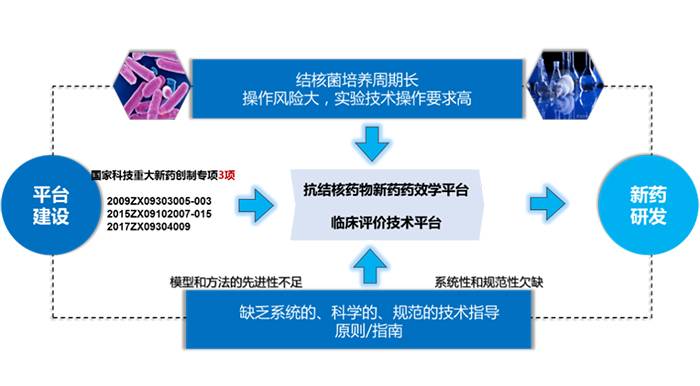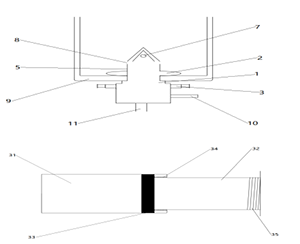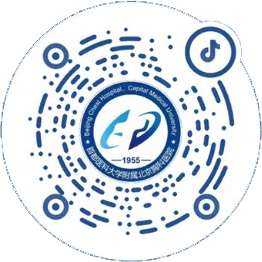2019年
No.24
Medical Abstracts
Keyword: lung cancer
1. Cancer Cell. 2020 Jan 13;37(1):37-54.e9. doi: 10.1016/j.ccell.2019.11.003. Epub
2019 Dec 26.
CDK7 Inhibition Potentiates Genome Instability Triggering Anti-tumor Immunity in
Small Cell Lung Cancer.
Zhang H(1), Christensen CL(2), Dries R(3), Oser MG(2), Deng J(4), Diskin B(5), Li
F(4), Pan Y(4), Zhang X(6), Yin Y(6), Papadopoulos E(4), Pyon V(4), …
Author information:
(1)Laura and Isaac Perlmutter Cancer Center, New York University Langone Medical
Center, New York, NY 10016, USA. Electronic address: hua.zhang@nyulangone.org.
(2)Department of Medical Oncology, Dana-Farber Cancer Institute, Boston, MA
02215, USA.
(3)Department of Pediatric Oncology, Dana-Farber Cancer Institute, Boston, MA
02215, USA.
Cyclin-dependent kinase 7 (CDK7) is a central regulator of the cell cycle and
gene transcription. However, little is known about its impact on genomic
instability and cancer immunity. Using a selective CDK7 inhibitor, YKL-5-124, we
demonstrated that CDK7 inhibition predominately disrupts cell-cycle progression
and induces DNA replication stress and genome instability in small cell lung
cancer (SCLC) while simultaneously triggering immune-response signaling. These
tumor-intrinsic events provoke a robust immune surveillance program elicited by
T cells, which is further enhanced by the addition of immune-checkpoint blockade.
Combining YKL-5-124 with anti-PD-1 offers significant survival benefit in
multiple highly aggressive murine models of SCLC, providing a rationale for new
combination regimens consisting of CDK7 inhibitors and immunotherapies.
Copyright © 2019 Elsevier Inc. All rights reserved.
DOI: 10.1016/j.ccell.2019.11.003
PMID: 31883968
2. Lancet Oncol. 2020 Feb;21(2):261-270. doi: 10.1016/S1470-2045(19)30690-4. Epub
2019 Dec 11.
Entrectinib in ROS1 fusion-positive non-small-cell lung cancer: integrated
analysis of three phase 1-2 trials.
Drilon A(1), Siena S(2), Dziadziuszko R(3), Barlesi F(4), Krebs MG(5), Shaw
AT(6), de Braud F(7), Rolfo C(8), Ahn MJ(9), Wolf J(10), Seto T(11),…
Author information:
(1)Weill Cornell Medical College, New York, NY, USA; Memorial Sloan Kettering
Cancer Center, New York, NY, USA.
(2)Department of Oncology and Hemato-Oncology, Università degli Studi di Milano,
Milan, Italy; Niguarda Cancer Center, Grande Ospedale Metropolitano Niguarda,
Milan, Italy.
(3)Institute of Cancer Sciences, Medical University of Gdansk, Gdansk, Poland.
…
Erratum in
Lancet Oncol. 2020 Feb;21(2):e70.
BACKGROUND: Recurrent gene fusions, such as ROS1 fusions, are oncogenic drivers
of various cancers, including non-small-cell lung cancer (NSCLC). Up to 36% of
patients with ROS1 fusion-positive NSCLC have brain metastases at the diagnosis
of advanced disease. Entrectinib is a ROS1 inhibitor that has been designed to
effectively penetrate and remain in the CNS. We explored the use of entrectinib
in patients with locally advanced or metastatic ROS1 fusion-positive NSCLC.
METHODS: We did an integrated analysis of three ongoing phase 1 or 2 trials of
entrectinib (ALKA-372-001, STARTRK-1, and STARTRK-2). The efficacy-evaluable
population included adult patients (aged ≥18 years) with locally advanced or
metastatic ROS1 fusion-positive NSCLC who received entrectinib at a dose of at
least 600 mg orally once per day, with at least 12 months' follow-up. All
patients had an Eastern Cooperative Oncology Group performance status of 0-2, and
previous cancer treatment (except for ROS1 inhibitors) was allowed. The primary
endpoints were the proportion of patients with an objective response (complete or
partial response according to Response Evaluation Criteria in Solid Tumors
version 1.1) and duration of response, and were evaluated by blinded independent
central review. The safety-evaluable population for the safety analysis included
all patients with ROS1 fusion-positive NSCLC in the three trials who received at
least one dose of entrectinib (irrespective of dose or duration of follow-up).
These ongoing studies are registered with ClinicalTrials.gov, NCT02097810
(STARTRK-1) and NCT02568267 (STARTRK-2), and EudraCT, 2012-000148-88
(ALKA-372-001).
FINDINGS: Patients were enrolled in ALKA-372-001 from Oct 26, 2012, to March 27,
2018; in STARTRK-1 from Aug 7, 2014, to May 10, 2018; and in STARTRK-2 from Nov
19, 2015 (enrolment is ongoing). At the data cutoff date for this analysis (May
31, 2018), 41 (77%; 95% CI 64-88) of 53 patients in the efficacy-evaluable
population had an objective response. Median follow-up was 15·5 monhts (IQR
13·4-20·2). Median duration of response was 24·6 months (95% CI 11·4-34·8). In
the safety-evaluable population, 79 (59%) of 134 patients had grade 1 or 2
treatment-related adverse events. 46 (34%) of 134 patients had grade 3 or 4
treatment-related adverse events, with the most common being weight increase (ten
[8%]) and neutropenia (five [4%]). 15 (11%) patients had serious
treatment-related adverse events, the most common of which were nervous system
disorders (four [3%]) and cardiac disorders (three [2%]). No treatment-related
deaths occurred.
INTERPRETATION: Entrectinib is active with durable disease control in patients
with ROS1 fusion-positive NSCLC, and is well tolerated with a manageable safety
profile, making it amenable to long-term dosing in these patients. These data
highlight the need to routinely test for ROS1 fusions to broaden therapeutic
options for patients with ROS1 fusion-positive NSCLC.
FUNDING: Ignyta/F Hoffmann-La Roche.
Copyright © 2020 Elsevier Ltd. All rights reserved.
DOI: 10.1016/S1470-2045(19)30690-4
PMID: 31838015
3. Lancet Oncol. 2019 Dec;20(12):1691-1701. doi: 10.1016/S1470-2045(19)30655-2. Epub 2019 Oct 25.
Lorlatinib in advanced ROS1-positive non-small-cell lung cancer: a multicentre,
open-label, single-arm, phase 1-2 trial.
Shaw AT(1), Solomon BJ(2), Chiari R(3), Riely GJ(4), Besse B(5), Soo RA(6), Kao
S(7), Lin CC(8), Bauer TM(9), Clancy JS(10), Thurm H(11), Martini JF(11), Peltz
G(12), Abbattista A(13), Li S(11), Ou SI(14).
Author information:
(1)Massachusetts General Hospital, Boston, MA, USA. Electronic address:
ashaw1@mgh.harvard.edu.
(2)Peter MacCallum Cancer Centre, Melbourne, VIC, Australia.
(3)Santa Maria della Misericordia Hospital, Azienda Ospedaliera di Perugia,
Perugia, Italy.
…
BACKGROUND: Lorlatinib is a potent, brain-penetrant, third-generation tyrosine
kinase inhibitor (TKI) that targets ALK and ROS1 with preclinical activity
against most known resistance mutations in ALK and ROS1. We investigated the
antitumour activity and safety of lorlatinib in advanced, ROS1-positive
non-small-cell lung cancer (NSCLC).
METHODS: In this open-label, single-arm, phase 1-2 trial, we enrolled patients
(aged ≥18 years) with histologically or cytologically confirmed advanced
ROS1-positive NSCLC, with or without CNS metastases, with an Eastern Cooperative
Oncology Group performance status of 2 or less (≤1 for phase 1 only) from 28
hospitals in 12 countries worldwide. Lorlatinib 100 mg once daily (escalating
doses of 10 mg once daily to 100 mg twice daily in phase 1 only) was given orally
in continuous 21-day cycles until investigator-determined disease progression,
unacceptable toxicity, withdrawal of consent, or death. The primary endpoint was
overall and intracranial tumour response, assessed by independent central review.
Activity endpoints were assessed in patients who received at least one dose of
lorlatinib. This study is ongoing and is registered with ClinicalTrials.gov,
NCT01970865.
FINDINGS: Between Jan 22, 2014, and Oct 2, 2016, we assessed 364 patients, of
whom 69 with ROS1-positive NSCLC were enrolled. 21 (30%) of 69 patients were
TKI-naive, 40 (58%) had previously received crizotinib as their only TKI, and
eight (12%) had previously received one non-crizotinib ROS1 TKI or two or more
ROS1 TKIs. The estimated median duration of follow-up for response was 21·1
months (IQR 15·2-30·3). 13 (62%; 95% CI 38-82) of 21 TKI-naive patients and 14
(35%; 21-52) of 40 patients previously treated with crizotinib as their only TKI
had an objective response. Intracranial responses were achieved in seven (64%;
95% CI 31-89) of 11 TKI-naive patients and 12 (50%; 29-71) of 24 previous
crizotinib-only patients. The most common grade 3-4 treatment-related adverse
events were hypertriglyceridaemia (13 [19%] of 69 patients) and
hypercholesterolaemia (ten [14%]). Serious treatment-related adverse events
occurred in five (7%) of 69 patients. No treatment-related deaths were reported.
INTERPRETATION: Lorlatinib showed clinical activity in patients with advanced
ROS1-positive NSCLC, including those with CNS metastases and those previously
treated with crizotinib. Because crizotinib-refractory patients have few
treatment options, lorlatinib could represent an important next-line targeted
agent.
FUNDING: Pfizer.
Copyright © 2019 Elsevier Ltd. All rights reserved.
DOI: 10.1016/S1470-2045(19)30655-2
PMID: 31669155
4. Lancet Oncol. 2019 Dec;20(12):1655-1669. doi: 10.1016/S1470-2045(19)30634-5. Epub 2019 Oct 4.
Ramucirumab plus erlotinib in patients with untreated, EGFR-mutated, advanced
non-small-cell lung cancer (RELAY): a randomised, double-blind,
placebo-controlled, phase 3 trial.
Nakagawa K(1), Garon EB(2), Seto T(3), Nishio M(4), Ponce Aix S(5), Paz-Ares
L(5), Chiu CH(6), Park K(7), Novello S(8), Nadal E(9), Imamura F(10), Yoh K(11),
Shih JY(12), Au KH(13), Moro-Sibilot D(14), Enatsu S(15), Zimmermann A(16),
Frimodt-Moller B(17), Visseren-Grul C(18), Reck M(19); RELAY Study Investigators.
Author information:
(1)Department of Medical Oncology, Kindai University Faculty of Medicine, Osaka,
Japan. Electronic address: nakagawa@med.kindai.ac.jp.
(2)David Geffen School of Medicine at University of California Los Angeles,
Translational Research in Oncology US Network, Los Angeles, CA, USA.
(3)National Hospital Organization Kyushu Cancer Center, Fukuoka, Japan.
…
BACKGROUND: Dual blockade of the EGFR and VEGF pathways in EGFR-mutated
metastatic non-small-cell lung cancer (NSCLC) is supported by preclinical and
clinical data, yet the approach is not widely implemented. RELAY assessed
erlotinib, an EGFR tyrosine kinase inhibitor (TKI) standard of care, plus
ramucirumab, a human IgG1 VEGFR2 antagonist, or placebo in patients with
untreated EGFR-mutated metastatic NSCLC.
METHODS: This is a worldwide, double-blind, phase 3 trial done in 100 hospitals,
clinics, and medical centres in 13 countries. Eligible patients were aged 18
years or older (20 years or older in Japan and Taiwan) at the time of study
entry, had stage IV NSCLC, with an EGFR exon 19 deletion (ex19del) or exon 21
substitution (Leu858Arg) mutation, an Eastern Cooperative Oncology Group
performance status of 0 or 1, and no CNS metastases. We randomly assigned
eligible patients in a 1:1 ratio to receive oral erlotinib (150 mg/day) plus
either intravenous ramucirumab (10 mg/kg) or matching placebo once every 2 weeks.
Randomisation was done by an interactive web response system with a
computer-generated sequence and stratified by sex, geographical region, EGFR
mutation type, and EGFR testing method. The primary endpoint was
investigator-assessed progression-free survival in the intention-to-treat
population. Safety was assessed in all patients who received at least one dose of
study treatment. This trial is registered at ClinicalTrials.gov, NCT02411448, and
is ongoing for long-term survival follow-up.
FINDINGS: Between Jan 28, 2016, and Feb 1, 2018, 449 eligible patients were
enrolled and randomly assigned to treatment with ramucirumab plus erlotinib
(n=224) or placebo plus erlotinib (n=225). Median duration of follow-up was 20·7
months (IQR 15·8-27·2). At the time of primary analysis, progression-free
survival was significantly longer in the ramucirumab plus erlotinib group (19·4
months [95% CI 15·4-21·6]) than in the placebo plus erlotinib group (12·4 months
[11·0-13·5]), with a stratified hazard ratio of 0·59 (95% CI 0·46-0·76;
p<0·0001). Grade 3-4 treatment-emergent adverse events were reported in 159 (72%)
of 221 patients in the ramucirumab plus erlotinib group versus 121 (54%) of 225
in the placebo plus erlotinib group. The most common grade 3-4 treatment-emergent
adverse events in the ramucirumab plus erlotinib group were hypertension (52
[24%]; grade 3 only) and dermatitis acneiform (33 [15%]), and in the placebo plus
erlotinib group were dermatitis acneiform (20 [9%]) and increased alanine
aminotransferase (17 [8%]). Treatment-emergent serious adverse events were
reported in 65 (29%) of 221 patients in the ramucirumab plus erlotinib group and
47 (21%) of 225 in the placebo plus erlotinib group. The most common serious
adverse events of any grade in the ramucirumab plus erlotinib group were
pneumonia (seven [3%]) and cellulitis and pneumothorax (four [2%], each); the
most common in the placebo plus erlotinib group were pyrexia (four [2%]) and
pneumothorax (three [1%]). One on-study treatment-related death due to an adverse
event occurred (haemothorax after a thoracic drainage procedure for a pleural
empyema) in the ramucirumab plus erlotinib group.
INTERPRETATION: Ramucirumab plus erlotinib demonstrated superior progression-free
survival compared with placebo plus erlotinib in patients with untreated
EGFR-mutated metastatic NSCLC. Safety was consistent with the safety profiles of
the individual compounds in advanced lung cancer. The RELAY regimen is a viable
new treatment option for the initial treatment of EGFR-mutated metastatic NSCLC.
FUNDING: Eli Lilly.
Copyright © 2019 Elsevier Ltd. All rights reserved.
DOI: 10.1016/S1470-2045(19)30634-5
PMID: 31591063
5. Lancet Oncol. 2019 Dec;20(12):1681-1690. doi: 10.1016/S1470-2045(19)30504-2. Epub 2019 Oct 3.
Lazertinib in patients with EGFR mutation-positive advanced non-small-cell lung
cancer: results from the dose escalation and dose expansion parts of a
first-in-human, open-label, multicentre, phase 1-2 study.
Ahn MJ(1), Han JY(2), Lee KH(3), Kim SW(4), Kim DW(5), Lee YG(6), Cho EK(7), Kim
JH(8), Lee GW(9), Lee JS(10), Min YJ(11), Kim JS(12), Lee SS(13), Kim HR(14),
Hong MH(14), Ahn JS(1), Sun JM(1), Kim HT(2), Lee DH(4), Kim S(15), Cho BC(16).
Author information:
(1)Division of Hematology-Oncology, Department of Medicine, Samsung Medical
Center, Sungkyunkwan University School of Medicine, Seoul, South Korea.
(2)Center for Lung Cancer, Research Institute and Hospital, National Cancer
Center, Goyang, South Korea.
(3)Division of Medical Oncology, Department of Medicine, Chungbuk National
University Hospital, Chungbuk National University College of Medicine, Cheongju,
South Korea.
…
Erratum in
Lancet Oncol. 2020 Feb;21(2):e70.
BACKGROUND: Patients with EGFR-mutated non-small-cell lung cancer (NSCLC) given
EGFR tyrosine kinase inhibitors (TKIs) inevitably become resistant to
first-generation or second-generation drugs. We assessed the safety,
tolerability, pharmacokinetics, and activity of lazertinib-an irreversible,
third-generation, mutant-selective, EGFR TKI-in patients with advanced NSCLC
progressing after EGFR TKI therapy.
METHODS: This first-in-human, open-label, multicentre, phase 1-2 study had three
parts: dose escalation, dose expansion, and dose extension; here, we report
results on dose escalation and dose expansion. The study was done in 14 hospitals
in Korea. Eligible patients were aged 20 years or older and had advanced NSCLC
harbouring an activating EGFR mutation and progressing after first-generation or
second-generation EGFR TKI treatment, a defined tumour T790M mutation status, an
Eastern Cooperative Oncology Group performance status of 0-1, at least one
measurable extracranial lesion, defined according to Response Evaluation Criteria
in Solid Tumors (RECIST) version 1.1, and adequate organ function. Patients were
enrolled to seven dose-escalation cohorts according to a rolling six design; five
cohorts were expanded. Patients were given oral lazertinib 20 mg, 40 mg, 80 mg,
120 mg, 160 mg, 240 mg, or 320 mg once daily continuously in 21-day cycles.
Primary endpoints were safety and tolerability and secondary endpoints included
objective response in evaluable patients. This study is registered with
ClinicalTrials.gov, NCT03046992, and the phase 2 extension study is ongoing.
FINDINGS: Between Feb 15, 2017, and May 28, 2018, 127 patients were enrolled into
the dose escalation group (n=38) and dose expansion group (n=89). No
dose-limiting toxicities occurred. There was no dose-dependent increase in
adverse events. The most commonly reported adverse events were grade 1-2 rash or
acne (in 38 [30%] of 127 patients) and pruritus (in 34 [27%]). Grade 3 or grade 4
adverse events occurred in 20 (16%) patients, with the most common being grade 3
pneumonia (four [3%]). Treatment-related grade 3 or 4 adverse events occurred in
four (3%) patients; treatment-related serious adverse events were reported in six
patients (5%). There were no adverse events with an outcome of death and no
treatment-related deaths. The proportion of patients achieving an objective
response by independent central review assessment was 69 (54%; 95% CI 46-63) of
127.
INTERPRETATION: Lazertinib had a tolerable safety profile and showed promosing
clinical activity in patients with NSCLC progressing on or after EGFR TKI
therapy. Our findings provide a rationale for further clinical investigations.
FUNDING: Yuhan Corporation.
Copyright © 2019 Elsevier Ltd. All rights reserved.
DOI: 10.1016/S1470-2045(19)30504-2
PMID: 31587882
6. J Clin Oncol. 2020 Mar 10;38(8):793-803. doi: 10.1200/JCO.19.01494. Epub 2019 Dec 27.
Randomized Phase III Study of Continuation Maintenance Bevacizumab With or
Without Pemetrexed in Advanced Nonsquamous Non-Small-Cell Lung Cancer: COMPASS
(WJOG5610L).
Seto T(1), Azuma K(2), Yamanaka T(3), Sugawara S(4), Yoshioka H(5), Wakuda K(6),
Atagi S(7), Iwamoto Y(8), Hayashi H(9), Okamoto I(10), Saka H(11), Mitsuoka
S(12), Fujimoto D(13), Nishino K(14), Horiike A(15), Daga H(16), Sone T(17),
Yamamoto N(18), Nakagawa K(19), Nakanishi Y(20).
Author information:
(1)National Hospital Organization Kyushu Cancer Center, Fukuoka, Japan.
(2)Kurume University School of Medicine, Kurume, Japan.
(3)Yokohama City University, Yokohama, Japan.
…
PURPOSE: Patients with non-small-cell lung cancer (NSCLC) have been shown to
benefit from maintenance therapy. COMPASS evaluated the efficacy and safety of
bevacizumab with or without pemetrexed as continuation maintenance therapy after
carboplatin, pemetrexed, and bevacizumab induction therapy.
PATIENTS AND METHODS: Patients with untreated advanced nonsquamous NSCLC without
confirmed EGFR 19 deletion or L858R mutation received first-line therapy with
carboplatin area under the curve 6, pemetrexed 500 mg/m2, and bevacizumab 15
mg/kg once every 3 weeks for 4 cycles. Patients without disease progression
during the induction therapy were randomly assigned 1:1 for maintenance therapy
with pemetrexed 500 mg/m2 plus bevacizumab 15 mg/kg or bevacizumab 15 mg/kg once
every 3 weeks until disease progression or unacceptable toxicity. The primary end
point was overall survival (OS) after random assignment.
RESULTS: Between September 2010 and September 2015, 907 patients received
induction therapy. Of those, 599 were randomly assigned: 298 received pemetrexed
plus bevacizumab, and 301 received bevacizumab. The median OS was 23.3 v 19.6
months (hazard ratio [HR], 0.87; 95% CI, 0.73 to 1.05; 1-sided stratified
log-rank P = .069). In the wild-type EGFR subset, the OS HR was 0.82 (95% CI,
0.68 to 0.99; 1-sided unstratified log-rank P = .020). The median
progression-free survival (PFS) was 5.7 v 4.0 months (HR, 0.67; 95% CI, 0.57 to
0.79; 2-sided log-rank P < .001). The safety data were consistent with previous
reports of treatment regimens.
CONCLUSION: In terms of the primary end point of OS, no statistically significant
benefit was observed; however, PFS in the total patient population and OS in
patients with wild-type EGFR was prolonged with the addition of pemetrexed to
bevacizumab maintenance therapy.
DOI: 10.1200/JCO.19.01494
PMID: 31880966
7. J Clin Oncol. 2020 Mar 1;38(7):706-714. doi: 10.1200/JCO.19.01162. Epub 2019 Dec 16.
Long-Term Results of NRG Oncology RTOG 0617: Standard- Versus High-Dose
Chemoradiotherapy With or Without Cetuximab for Unresectable Stage III
Non-Small-Cell Lung Cancer.
Bradley JD(1), Hu C(2)(3), Komaki RR(4), Masters GA(5), Blumenschein GR(4),
Schild SE(6), Bogart JA(7), Forster KM(8), Magliocco AM(9), Kavadi VS(10),
Narayan S(11), Iyengar P(12), Robinson CG(13), Wynn RB(14), Koprowski CD(15),
Olson MR(16), Meng J(17), Paulus R(2), Curran WJ Jr(18), Choy H(12).
Author information:
(1)Emory University School of Medicine, Atlanta, GA.
(2)NRG Oncology Statistics and Data Management Center, Pittsburgh, PA.
(3)Johns Hopkins University School of Medicine, Baltimore, MD.
…
PURPOSE: RTOG 0617 compared standard-dose (SD; 60 Gy) versus high-dose (HD; 74
Gy) radiation with concurrent chemotherapy and determined the efficacy of
cetuximab for stage III non-small-cell lung cancer (NSCLC).
METHODS: The study used a 2 × 2 factorial design with radiation dose as 1 factor
and cetuximab as the other, with a primary end point of overall survival (OS).
RESULTS: Median follow-up was 5.1 years. There were 3 grade 5 adverse events
(AEs) in the SD arm and 9 in the HD arm. Treatment-related grade ≥3 dysphagia and
esophagitis occurred in 3.2% and 5.0% of patients in the SD arm v 12.1% and 17.4%
in the HD arm, respectively (P = .0005 and < .0001). There was no difference in
pulmonary toxicity, with grade ≥3 AEs in 20.6% and 19.3%. Median OS was 28.7 v
20.3 months (P = .0072) in the SD and HD arms, respectively, 5-year OS and
progression-free survival (PFS) rates were 32.1% and 23% and 18.3% and 13% (P =
.055), respectively. Factors associated with improved OS on multivariable
analysis were standard radiation dose, tumor location, institution accrual
volume, esophagitis/dysphagia, planning target volume and heart V5. The use of
cetuximab conferred no survival benefit at the expense of increased toxicity. The
prior signal of benefit in patients with higher H scores was no longer apparent.
The progression rate within 1 month of treatment completion in the SD arm was
4.6%. For comparison purposes, the resultant 2-year OS and PFS rates allowing for
that dropout rate were 59.6% and 30.7%, respectively, in the SD arms.
CONCLUSION: A 60-Gy radiation dose with concurrent chemotherapy should remain the
standard of care, with the OS rate being among the highest reported in the
literature for stage III NSCLC. Cetuximab had no effect on OS. The 2-year OS
rates in the control arm are similar to the PACIFIC trial.
DOI: 10.1200/JCO.19.01162
PMCID: PMC7048161 [Available on 2021-03-01]
PMID: 31841363
8. J Clin Oncol. 2020 Feb 20;38(6):613-622. doi: 10.1200/JCO.19.00816. Epub 2019 Dec 12.
Randomized Phase III Study of Ganetespib, a Heat Shock Protein 90 Inhibitor, With
Docetaxel Versus Docetaxel in Advanced Non-Small-Cell Lung Cancer (GALAXY-2).
Pillai RN(1), Fennell DA(2), Kovcin V(3), Ciuleanu TE(4), Ramlau R(5), Kowalski
D(6), Schenker M(7), Yalcin I(8), Teofilovici F(8), Vukovic VM(8), Ramalingam
SS(1).
Author information:
(1)Winship Cancer Institute, Emory University, Atlanta, GA.
(2)University of Leicester, Leicester, United Kingdom.
(3)Clinical Hospital Centre Be?anijska Beograd, Belgrade, Serbia.
…
PURPOSE: Ganetespib, a highly potent heat shock protein 90 inhibitor, blocks
multiple oncogenic pathways, resulting in antitumor activity. We evaluated the
combination of ganetespib and docetaxel for second-line therapy of patients with
advanced adenocarcinoma of the lung.
PATIENTS AND METHODS: In this international phase III trial, patients with stage
IIIB or IV adenocarcinoma diagnosed > 6 months before study entry and 1 prior
systemic therapy were randomly assigned (1:1) to ganetespib 150 mg/m2 on days 1
and 15 with docetaxel 75 mg/m2 on day 1 of a 21-day cycle or to docetaxel alone.
The primary end point was overall survival (OS).
RESULTS: Of 677 enrolled patients, 335 were randomly assigned to ganetespib and
docetaxel and 337 were assigned to docetaxel. The trial was stopped early as a
result of futility at a planned interim analysis. The median OS time was 10.9
months (95% CI, 9.0 to 12.3 months) in the ganetespib and docetaxel arm compared
with 10.5 months (95% CI, 8.6 to 12.2 months) in docetaxel arm (hazard ratio
[HR], 1.11; 95% CI, 0.899 to 1.372; P = .329). Median progression-free survival
was 4.2 months in the ganetespib and docetaxel arm and 4.3 months in the
docetaxel arm (HR, 1.16; 95% CI, 0.96 to 1.403; P = .119). The addition of
ganetespib did not improve outcomes compared with docetaxel alone for any
secondary end point, including survival in the elevated lactate dehydrogenase or
EGFR and ALK wild-type populations. The most common grade 3 or 4 adverse event in
both arms was neutropenia (30.9% with ganetespib and docetaxel v 25% with
docetaxel).
CONCLUSION: The addition of ganetespib to docetaxel did not result in improved
survival for salvage therapy of patients with advanced-stage lung adenocarcinoma.
DOI: 10.1200/JCO.19.00816
PMID: 31829907
9. J Clin Oncol. 2020 Mar 1;38(7):753-766. doi: 10.1200/JCO.19.02748. Epub 2019 Dec 12.
Lung Cancer Surveillance After Definitive Curative-Intent Therapy: ASCO
Guideline.
Schneider BJ(1), Ismaila N(2), Aerts J(3), Chiles C(4), Daly ME(5), Detterbeck
FC(6), Hearn JWD(1), Katz SI(7), Leighl NB(8), Levy B(9), Meyers B(10), Murgu
S(11), Nekhlyudov L(12), Santos ES(13), Singh N(14), Tashbar J(15), Yankelevitz
D(16), Altorki N(17).
Author information:
(1)University of Michigan Health System, Ann Arbor, MI.
(2)American Society of Clinical Oncology, Alexandria, VA.
(3)Erasmus Medical Center Cancer Institute, Rotterdam, the Netherlands.
…
PURPOSE: To provide evidence-based recommendations to practicing clinicians on
radiographic imaging and biomarker surveillance strategies after definitive
curative-intent therapy in patients with stage I-III non-small-cell lung cancer
(NSCLC) and SCLC.
METHODS: ASCO convened an Expert Panel of medical oncology, thoracic surgery,
radiation oncology, pulmonary, radiology, primary care, and advocacy experts to
conduct a literature search, which included systematic reviews, meta-analyses,
randomized controlled trials, and prospective and retrospective comparative
observational studies published from 2000 through 2019. Outcomes of interest
included survival, disease-free or recurrence-free survival, and quality of life.
Expert Panel members used available evidence and informal consensus to develop
evidence-based guideline recommendations.
RESULTS: The literature search identified 14 relevant studies to inform the
evidence base for this guideline.
RECOMMENDATIONS: Patients should undergo surveillance imaging for recurrence
every 6 months for 2 years and then annually for detection of new primary lung
cancers. Chest computed tomography imaging is the optimal imaging modality for
surveillance. Fluorodeoxyglucose positron emission tomography/computed tomography
imaging should not be used as a surveillance tool. Surveillance imaging may not
be offered to patients who are clinically unsuitable for or unwilling to accept
further treatment. Age should not preclude surveillance imaging. Circulating
biomarkers should not be used as a surveillance strategy for detection of
recurrence. Brain magnetic resonance imaging should not be used for routine
surveillance in stage I-III NSCLC but may be used every 3 months for the first
year and every 6 months for the second year in patients with stage I-III
small-cell lung cancer who have undergone curative-intent treatment.
DOI: 10.1200/JCO.19.02748
PMID: 31829901
10. J Clin Oncol. 2020 Feb 10;38(5):488-495. doi: 10.1200/JCO.19.00931. Epub 2019 Dec 11.
Osimertinib for Patients With Non-Small-Cell Lung Cancer Harboring Uncommon EGFR
Mutations: A Multicenter, Open-Label, Phase II Trial (KCSG-LU15-09).
Cho JH(1), Lim SH(2), An HJ(3), Kim KH(4), Park KU(5), Kang EJ(6), Choi YH(7),
Ahn MS(8), Lee MH(9), Sun JM(1), Lee SH(1), Ahn JS(1), Park K(1), Ahn MJ(1).
Author information:
(1)Samsung Medical Center, Sungkyunkwan University School of Medicine, Seoul,
Republic of Korea.
(2)Soonchunhyang University Bucheon Hospital, Bucheon, Republic of Korea.
(3)St Vincent's Hospital, The Catholic University of Korea, Seoul, Republic of
Korea.
…
PURPOSE: Approximately 10% of patients with epidermal growth factor receptor
(EGFR) mutation-positive non-small-cell lung cancer (NSCLC) harbor uncommon
mutations. Here, we report the efficacy and safety of osimertinib in patients
with NSCLC harboring uncommon EGFR mutations.
PATIENT AND METHODS: This was a multicenter, single-arm, open-label, phase II
study in Korea. Patients with histologically confirmed metastatic or recurrent
NSCLC harboring EGFR mutations other than the exon 19 deletion, L858R and T790M
mutations, and exon 20 insertion were eligible for the study. The primary end
point of objective response rate was assessed every 6 weeks by Response
Evaluation Criteria in Solid Tumors (RECIST) version 1.1. Secondary end points
were progression-free survival, overall survival, duration of response, and
safety.
RESULTS: Between March 2016 and October 2017, 37 patients were enrolled. All were
evaluable except one patient who withdrew consent after starting treatment.
Median age was 60 years, and 22 (61%) were male. Among patients, 61% received
osimertinib as first-line therapy. The mutations identified were G719X (n = 19;
53%), followed by L861Q (n = 9; 25%), S768I (n = 8; 22%), and others (n = 4;
11%). Objective response rate was 50% (18 of 36 patients; 95% CI, 33% to 67%).
Median progression-free survival was 8.2 months (95% CI, 5.9 to 10.5 months), and
median overall survival was not reached. Median duration of response was 11.2
months (95% CI, 7.7 to 14.7 months). Adverse events of any grade were rash (n =
11; 31%), pruritus (n = 9; 25%), decreased appetite (n = 9; 25%), diarrhea (n =
8; 22%), and dyspnea (n = 8; 22%), but all adverse events were manageable.
CONCLUSION: Osimertinib demonstrated favorable activity with manageable toxicity
in patients with NSCLC harboring uncommon EGFR mutations.
DOI: 10.1200/JCO.19.00931
PMID: 31825714
11. Nat Commun. 2019 Dec 6;10(1):5604. doi: 10.1038/s41467-019-13419-4.
Reactive metabolite production is a targetable liability of glycolytic metabolism
in lung cancer.
Luengo A(1)(2), Abbott KL(1)(2), Davidson SM(1)(2)(3), Hosios AM(1)(2), Faubert
B(4), Chan SH(5), Freinkman E(5), Zacharias LG(4), Mathews TP(4)(6), Clish CB(3),
DeBerardinis RJ(4)(6)(7), Lewis CA(5), Vander Heiden MG(8)(9)(10)(11).
Author information:
(1)Koch Institute for Integrative Cancer Research, Massachusetts Institute of
Technology, Cambridge, MA, 02139, USA.
(2)Department of Biology, Massachusetts Institute of Technology, Cambridge, MA,
02139, USA.
(3)Broad Institute of MIT and Harvard University, Cambridge, MA, 02142, USA.
…
Increased glucose uptake and metabolism is a prominent phenotype of most cancers,
but efforts to clinically target this metabolic alteration have been challenging.
Here, we present evidence that lactoylglutathione (LGSH), a byproduct of
methylglyoxal detoxification, is elevated in both human and murine non-small cell
lung cancers (NSCLC). Methylglyoxal is a reactive metabolite byproduct of
glycolysis that reacts non-enzymatically with nucleophiles in cells, including
basic amino acids, and reduces cellular fitness. Detoxification of methylglyoxal
requires reduced glutathione (GSH), which accumulates to high levels in NSCLC
relative to normal lung. Ablation of the methylglyoxal detoxification enzyme
glyoxalase I (Glo1) potentiates methylglyoxal sensitivity and reduces tumor
growth in mice, arguing that targeting pathways involved in detoxification of
reactive metabolites is an approach to exploit the consequences of increased
glucose metabolism in cancer.
DOI: 10.1038/s41467-019-13419-4
PMCID: PMC6898239
PMID: 31811141 [Indexed for MEDLINE]
12. Nat Commun. 2019 Dec 6;10(1):5587. doi: 10.1038/s41467-019-13441-6.
Mapping lung cancer epithelial-mesenchymal transition states and trajectories
with single-cell resolution.
Karacosta LG(1)(2), Anchang B(1)(2), Ignatiadis N(3), Kimmey SC(4), Benson JA(5),
Shrager JB(5), Tibshirani R(1)(3), Bendall SC(4), Plevritis SK(6)(7).
Author information:
(1)Department of Biomedical Data Science, Stanford University, Stanford, USA.
(2)Department of Radiology, Stanford University, Stanford, USA.
(3)Department of Statistics, Stanford University, Stanford, USA.
…
Elucidating the spectrum of epithelial-mesenchymal transition (EMT) and
mesenchymal-epithelial transition (MET) states in clinical samples promises
insights on cancer progression and drug resistance. Using mass cytometry
time-course analysis, we resolve lung cancer EMT states through TGFβ-treatment
and identify, through TGFβ-withdrawal, a distinct MET state. We demonstrate
significant differences between EMT and MET trajectories using a computational
tool (TRACER) for reconstructing trajectories between cell states. In addition,
we construct a lung cancer reference map of EMT and MET states referred to as the
EMT-MET PHENOtypic STAte MaP (PHENOSTAMP). Using a neural net algorithm, we
project clinical samples onto the EMT-MET PHENOSTAMP to characterize their
phenotypic profile with single-cell resolution in terms of our in vitro EMT-MET
analysis. In summary, we provide a framework to phenotypically characterize
clinical samples in the context of in vitro EMT-MET findings which could help
assess clinical relevance of EMT in cancer in future studies.
DOI: 10.1038/s41467-019-13441-6
PMCID: PMC6898514
PMID: 31811131 [Indexed for MEDLINE]
13. J Clin Oncol. 2020 Feb 20;38(6):538-547. doi: 10.1200/JCO.19.00457. Epub 2019 Dec 6.
Osimertinib in Patients With Epidermal Growth Factor Receptor Mutation-Positive
Non-Small-Cell Lung Cancer and Leptomeningeal Metastases: The BLOOM Study.
Yang JCH(1), Kim SW(2), Kim DW(3), Lee JS(4), Cho BC(5), Ahn JS(6), Lee DH(2),
Kim TM(3), Goldman JW(7), Natale RB(8), Brown AP(9), Collins B(9), Chmielecki
J(10), Vishwanathan K(1)(10), Mendoza-Naranjo A(9), Ahn MJ(6).
Author information:
(1)National Taiwan University Hospital, Taipei, Republic of China.
(2)Asan Medical Center, Seoul, Republic of Korea.
(3)Seoul National University Hospital, Seoul, Republic of Korea.
…
PURPOSE: In this phase I study (BLOOM), osimertinib, a third-generation epidermal
growth factor receptor (EGFR) tyrosine kinase inhibitor (TKI), was evaluated in
patients with leptomeningeal metastases (LMs) from EGFR-mutated (EGFRm) advanced
non-small-cell lung cancer (NSCLC) whose disease had progressed on previous
EGFR-TKI therapy.
PATIENTS AND METHODS: Patients with cytologically confirmed LM received
osimertinib 160 mg once daily. Objectives were to assess confirmed objective
response rate (ORR), duration of response (DoR), progression-free survival (PFS),
overall survival (OS), pharmacokinetics (PK), and safety. Additional efficacy
evaluations included changes from baseline in CSF cytology and neurologic
examination. Measurable lesions were assessed by investigator according to RECIST
version 1.1. LMs were assessed by neuroradiologic blinded central independent
review (BICR) according to Response Assessment in Neuro-Oncology LM radiologic
criteria and by investigator.
RESULTS: Forty-one patients were enrolled. LM ORR and DoR by neuroradiologic BICR
were 62% (95% CI, 45% to 78%) and 15.2 months (95% CI, 7.5 to 17.5 months),
respectively. Overall, ORR by investigator was 41% (95% CI, 26% to 58%), and
median DoR was 8.3 months (95% CI, 5.6 to 16.5 months). Median
investigator-assessed PFS was 8.6 months (95% CI, 5.4 to 13.7 months) with 78%
maturity; median OS was 11.0 months (95% CI, 8.0 to 18.0 months) with 68%
maturity. CSF tumor cell clearance was confirmed in 11 (28%; 95% CI, 15% to 44%)
of 40 patients. Neurologic function was improved in 12 (57%) of 21 patients with
an abnormal assessment at baseline. The adverse event and PK profiles were
consistent with previous reports for osimertinib.
CONCLUSION: Osimertinib showed meaningful therapeutic efficacy in the CNS and a
manageable safety profile at 160 mg once daily in patients with EGFRm NSCLC and
LM.
DOI: 10.1200/JCO.19.00457
PMCID: PMC7030895 [Available on 2021-02-20]
PMID: 31809241
14. Genes Dev. 2019 Dec 1;33(23-24):1718-1738. doi: 10.1101/gad.328336.119. Epub 2019 Nov 14.
The KDM5A/RBP2 histone demethylase represses NOTCH signaling to sustain
neuroendocrine differentiation and promote small cell lung cancer tumorigenesis.
Oser MG(1)(2)(3), Sabet AH(1), Gao W(1)(3), Chakraborty AA(1)(3), Schinzel AC(1),
Jennings RB(1)(4), Fonseca R(1), Bonal DM(1)(5), Booker MA(6), Flaifel A(1)(4),
Novak JS(1)(4), Christensen CL(1), Zhang H(7), Herbert ZT(8), Tolstorukov MY(6),
Buss EJ(1)(9), Wong KK(7), Bronson RT(10), Nguyen QD(1)(5), Signoretti S(1)(4),
Kaelin WG Jr(1)(3)(9).
Author information:
(1)Department of Medical Oncology, Dana-Farber Cancer Institute and Brigham and
Women's Hospital, Harvard Medical School, Boston, Massachusetts 02215, USA.
(2)Lowe Center for Thoracic Oncology, Dana-Farber Cancer Institute, Boston,
Massachusetts 02215, USA.
(3)Department of Medicine, Brigham and Women's Hospital, Harvard Medical School,
Massachusetts 02115, USA.
…
More than 90% of small cell lung cancers (SCLCs) harbor loss-of-function
mutations in the tumor suppressor gene RB1 The canonical function of the RB1 gene
product, pRB, is to repress the E2F transcription factor family, but pRB also
functions to regulate cellular differentiation in part through its binding to the
histone demethylase KDM5A (also known as RBP2 or JARID1A). We show that KDM5A
promotes SCLC proliferation and SCLC's neuroendocrine differentiation phenotype
in part by sustaining expression of the neuroendocrine transcription factor
ASCL1. Mechanistically, we found that KDM5A sustains ASCL1 levels and
neuroendocrine differentiation by repressing NOTCH2 and NOTCH target genes. To
test the role of KDM5A in SCLC tumorigenesis in vivo, we developed a
CRISPR/Cas9-based mouse model of SCLC by delivering an adenovirus (or an
adeno-associated virus [AAV]) that expresses Cre recombinase and sgRNAs targeting
Rb1, Tp53, and Rbl2 into the lungs of Lox-Stop-Lox Cas9 mice. Coinclusion of a
KDM5A sgRNA decreased SCLC tumorigenesis and metastasis, and the SCLCs that
formed despite the absence of KDM5A had higher NOTCH activity compared to KDM5A
+/+ SCLCs. This work establishes a role for KDM5A in SCLC tumorigenesis and
suggests that KDM5 inhibitors should be explored as treatments for SCLC.
© 2019 Oser et al.; Published by Cold Spring Harbor Laboratory Press.
DOI: 10.1101/gad.328336.119
PMCID: PMC6942053 [Available on 2020-06-01]
PMID: 31727771 [Indexed for MEDLINE]
下一篇: No.23









.jpg)
















